Microsoft and Asobo helped make Flight Sim Expo 2023 extra memorable by announcing and releasing Famous Flyer #6: Ford 4-AT Trimotor and for a limited time making it available for free. If you’re reading this review at time of publication, you can still claim the Trimotor for free another couple of days – until June 30 at 11:59 PM PDT. After that it will go to the standard $14.99 USD pricing (with the usual discount for Premium Deluxe owners). Let’s have a look at this airplane and see if its worth your time!
A bit of history

The Ford Trimotor is both a success story and one that is steeped in some controversy. Ford invested in the Stout Metal Airplane Company in the early 1920s with the company producing a twin engine prototype that would soon become a three engine type with the Stout 3-AT giving way to the more successful 4-AT and 5-AT models. The three engines was a concession to perceived safety on the part of passengers who were reassured the that airplane could continue to fly on two engines if one should fail.
The type’s all metal design was both a marketing point as well as giving the Trimotor excellent robustness for rough field operations which was common at the time. Popularity of the type ensued with 199 built and flown by about 100 different airline companies. It was also used by Franklin Roosevelt during his 1932 presidential campaign marking the first use of an airplane in such a role replacing the whistle-stop train tour.
The type experienced some challenges too in the legal sense. When Ford attempted to sell the airplane in Europe, the Junkers company sued and won on intellectual property grounds as the Trimotor’s corrugated aluminum design infringed on their designs. Ford countersued in Prague hoping anti-German sentiment would help the case but Ford was once again defeated.
The good…
The makers of this latest Asobo/Microsoft aircraft release are Aeroplane Heaven. They have a bit of a complicated reputation being known for creating some genuinely beautiful airplanes for the sim but also for creating some airplanes with weird quirks, bugs, sound problems and questionable flight models.
There are some great points to this airplane. Visually, its mostly stunning with beautiful modeling on some rather complex parts. The engines, with their cylinders exposed, look really good as do most of the exterior and interior modeling. The cockpit materials are great and I love the shine that comes off the type’s wood-finished yoke (or steering wheel really). The passenger area looks fantastic too.






I also think the start-up procedure, though a bit complicated to follow at first, is quite enjoyable too. It took me a bit of time and watching a tutorial to realize that the starter is more an energizer and that it takes about 10 seconds spinning up before hitting the solenoid to actually start the engine. Four pumps on the fuel line is also important! Once I figured that out, things went smoothly starting all three engines without too much of a problem. Failed engine starts emit a bunch of smoke and I find that satisfying to watch even if I’m then annoyed at my lack of technique. Starting the engine is of course better and that causes smoke and fire effects. Nice!
The radio system works in the aircraft with the ability to dial in Nav and Comm settings. I was able to successfully home in on a VOR-DME as well. There’s no transponder control that I’ve found so for those flying on VATSIM this airplane may not work for you – someone correct me if I’m wrong.
There are two semi-hidden controls located near the rudders on the center control console that open the passenger door and the luggage doors – which are stored in the wing. A vintage truck appears next to the plane to help with the luggage which is a nice touch. I love those little details!


The type also has ski and floatplane variants. These both work well and the floatplane version has a functioning water rudder making maneuvering easier.




…and the bad
There are some issues with this airplane too.
I start with the visuals. The corrugated textures are, like on the Ju52 and other aircraft in the sim, a bit of a challenge as they cause a moire-pattern to appear as you view the aircraft from the outside. Its not pronounced in screenshots because they are not in motion. I don’t think this is easily solvable, even at a graphics engine level, and so aside from noting it, I don’t think it a huge issue.

The visuals on the landing lights are also… strange. Its like the light itself isn’t that bright but the affect it has on the leading edge of the wing is quite pronounced. At night the effect is better but during the daytime it just looks weird.


The sounds on the Ford 4-AT are adequate but not especially impressive and lack some punch. I do like the ambient noises with the electric system on and I appreciate that the control column and other controls in the cockpit all have their own sounds.
Another minor issue I noticed is that the water rudder control can also be found on the regular and ski versions but with no apparent use.
The flight model is decent considering the price point and the baseline for the whole of the sim. Like most MSFS aircraft, the Trimotor is quite stable and while that is characteristic, I do suspect that a little more asymmetric yaw would be there. It’s fine, it doesn’t have any weird flight model bugs that I’ve noticed, but it doesn’t stand out either.
As you can see, these are mostly minor issues. These are things that probably should have been sorted out before launch but at the same time don’t unduly affect my enjoyment of the airplane.
Flying the Trimotor
Let’s start with taxing and taking off.
Although the weirdness with tail-wheel aircraft have been somewhat sorted out over the years, Microsoft aircraft do sometimes still have a weird planted feeling while the tailwheel is on the ground and this one has that feeling too.
Taxiing does take some thought. Both because of the tail dragging arrangement serving to block the forward view as well as the wide turns that the Trimotor makes when you go left or right.
Once on the runway and powered up, the transition between tailwheel and main wheels as the tail lifts off is surprisingly natural (again, big improvements over the years) and you get to takeoff speed rather quickly. Short fields are of relatively little trouble when weight is managed!
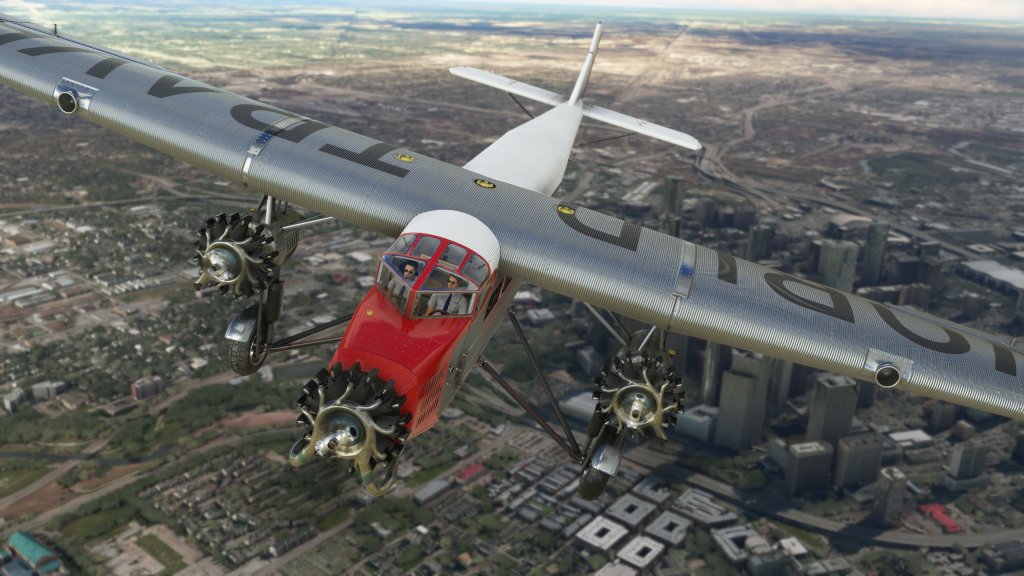
Climbing takes a while as does going anywhere in general as the airplane tends to cruise around 90-95 mph or maybe 100-105 mph on a good day. This might be a bit under-powered from the real one with a listed 107 mph and 132 mph top speed. But then I may have just been enjoying the sights too much and not worrying enough about optimal cruise speed.
Turns are well coordinated in general (a little rudder does help) and the roll rate is ponderous. This isn’t a fighter plane and it doesn’t handle like one. It is very stable which was apparently characteristic of the type.
There is elevator trim but no aileron or rudder trim and there’s no autopilot either so this is a manual control affair. You need to keep on top of it because, although stable, it does like to slowly roll and turn off to the left.

As I mentioned before, the radio navigation does work and that can help a fair bit with navigation if you want to do it correctly. There are no GPS retrofits in this airplane so you have to do it old-school or use the VFR map.
Final thoughts
Minor issues aside, I’ve had quite a bit of fun flying the Ford Trimotor. This has been an aircraft that I hoped would emerge in one of the various series that Asobo and Microsoft have been putting out. And here it is! This is another one of those key airplanes in aviation history and so to being able to experience it in this way is superb.
Like most of the Famous Flyers, the experience isn’t too deep as there’s no failure modeling or beyond the default level of engine management. On the other hand, as a digital recreation and interactive museum piece I find that this airplane excels. Beautiful details combined with a decent level of effort on the flight and basic systems make it good for some historical fights and adventures around the world.
A few tweaks to a few of its negative points would solve most of what I have trouble with on this plane. Fix the landing lights and maybe punch up the engine audio just a tad and I’d be very happy with this plane.
Of course, I have to weigh my opinion here based on price. This won’t compete with the premier aircraft models out there but for what it is I think it succeeds!
With the current price of free, its hard to criticize it very much either. Although I’ve turned the same critical eye to it that I do all reviews it’s still an inexpensive and fun addition.
If you’re reading this later on, its still worth a look for $14.99 USD if you love this kind of airplane that is primarily intended to be fun, that is steeped in history, and that let’s you experience that history in the world of Microsoft Flight Simulator.
Screenshots















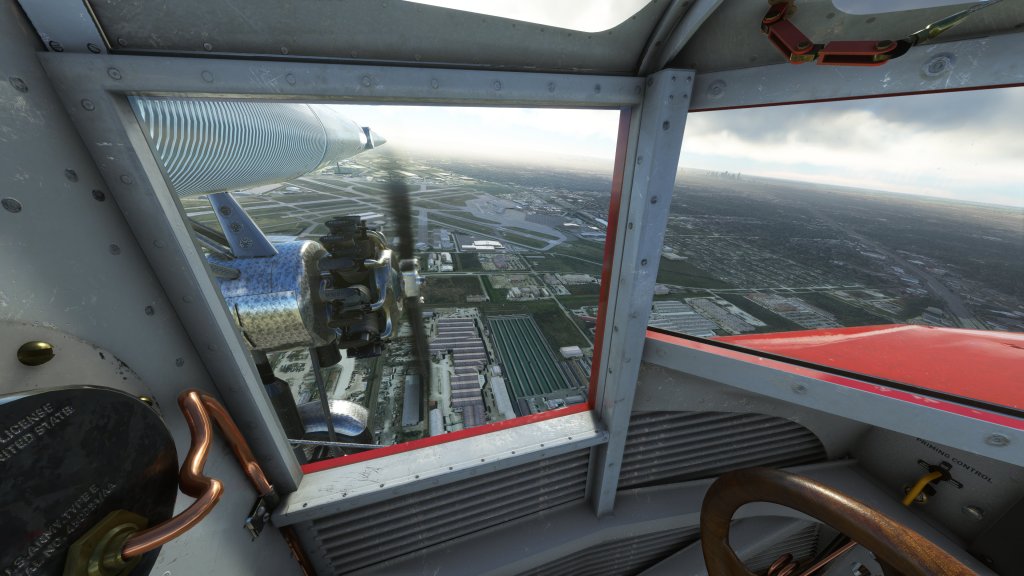
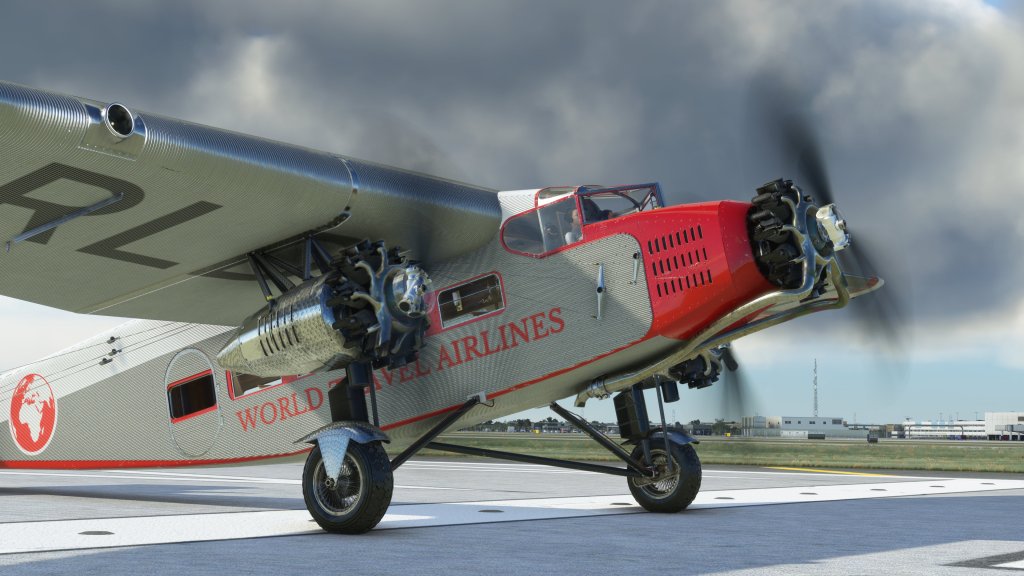
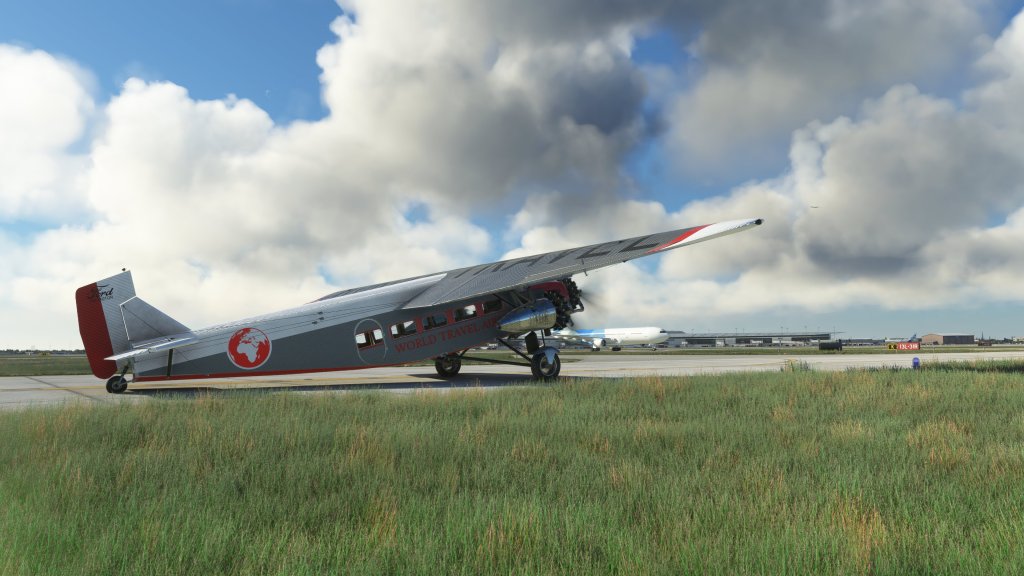


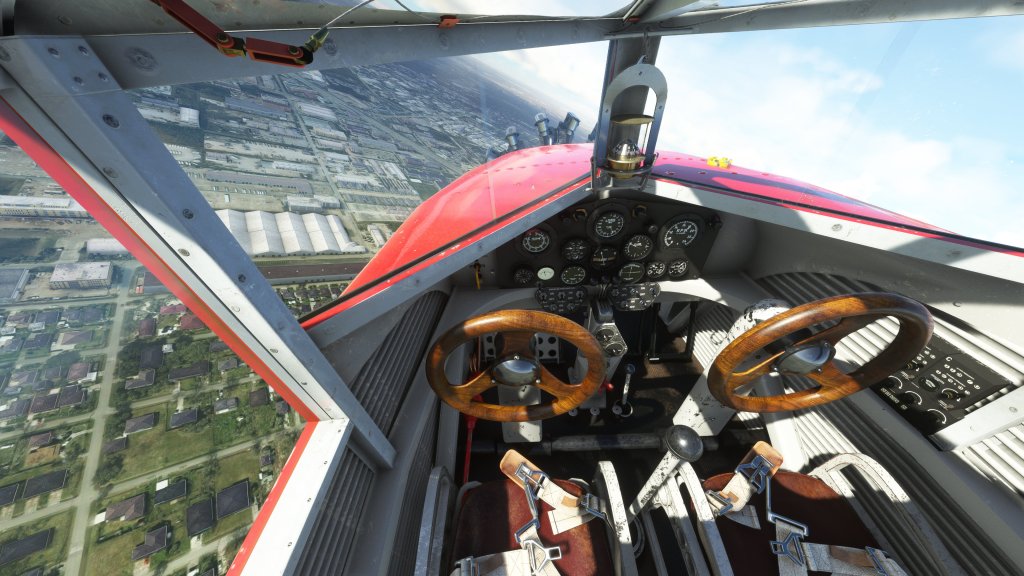
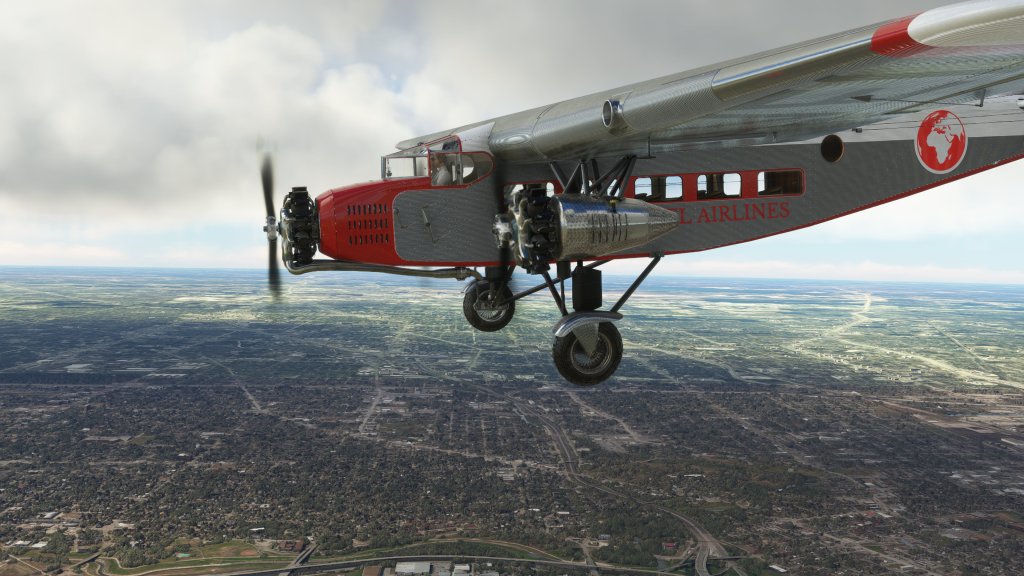
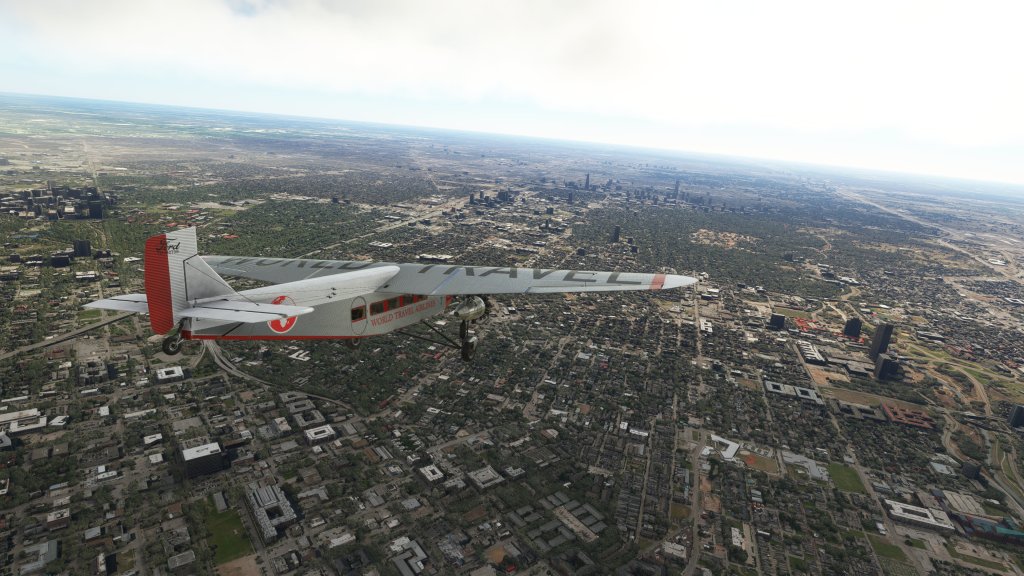





“Nice try, Lao Che!”
Man I really hope someone makes a Lao Che Air Freight livery for it.
LikeLike
Nothing yet on Flightsim.to but I’m sure there will be eventually!
LikeLike
Re. a transponder, there’s a small knob to the right of the priming control on the left side of the front panel. Turning that knob allows you to select from three different panels (one of which has a transponder on the right side).
LikeLiked by 1 person
Hey Jim! I totally missed that. Great spot!
LikeLike
A beautiful airplane! Thank you for the review.
LikeLiked by 1 person
Thanks for the review. Sounds like an interesting plane and quite nice of them to give it for free.
Btw, in case you need some inspiration of what else one can do with it:
LikeLike
Nice to see that MS/Asobo has taught AH a thing or two on models and textures. With important planes like the Electra, Mustang and DC-3 in their portfolio and probably many more to come, I’m happy to see the transition from FSX era graphics to MSFS standard.
LikeLike